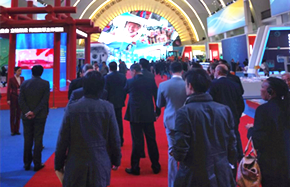Preventing crisis and conflict in the Himalayas:A joint Himalayan Consensus and UNDP Initiative
 |
|
A Tibetan Opera actress helps a cast member apply makeup before a Tibetan Opera competition in Lhasa, capital of the Tibetan autonomous region, on Tuesday. Zhang Rufeng / Xinhua |
Among the most fragile and vulnerable ecological systems in the world today, are the Himalayan glaciers. The river systems of China, South Asia, and Southeast Asia that flow from the Himalayan glaciers, are the source of water and food security for one half of humanity, and share eco-systems with Central Asia and the steppes of Mongolia. These areas are also among the least developed in terms of economic development and attracting investments.
The importance of crisis prevention through both dialogue and action, focused on mitigation of climate disruption together with cultural and environmental protection of upstream and downstream communities, is both urgent and essential. Moreover, the opportunities of economic growth through China’s Belt and Road Initiative (B&R) offer a key element to create a conflict resilient socio-economic environment. This will require increased dialogue and engagement between China and South Asia towards developing closer ties and more open understanding.
At the same time, Europe has witnessed the largest stream of refugee migration since World War II. A far worse scenario could arise if there is severe damage to glaciers and eco-systems of the Hindu-Kush Himalayan region, or other disasters with high impact on livelihoods. Floods have displaced massive numbers of people in Pakistan, Nepal and Bangladesh this monsoon alone.
Given these increasing vulnerabilities, an innovative and integrated second track crisis prevention, mitigation and conflict mediation approach is needed: promoting inclusive economic growth, establishing a system of early warning, and direct facilitation and mediation of conflict, supported with modern data analytics with the information available through UNDP and partner organizations of the Himalayan Consensus Institute for early warning systems to avert crisis. ?
The Himalayan Consensus process is dedicated to the prevention of conflict and crisis by enhancing renewable energy and efficient energy solutions for communities, by addressing trans-boundary water challenges and the issues of water conservation, reuse and recycling, and through community empowerment adopting heritage conservation business models to support preservation of identity, through emphasis of local participation using business drivers in public-private partnerships and promoting investments. The creative use of global finance is an essential component to enhance resilience and sustainability. Combined action for community economic empowerment and cultural sustainable development will reduce the risk of conflict.
On November 14, 2017, the Himalayan Consensus Institute and UNDP Nepal forged a partnership to launch the Himalayan Consensus Initiative for Crisis and Conflict Mitigation. The significance of this initiative has the potential to have a far-reaching impact beyond the borders of Nepal. It is envisioned that similar programs could be adopted across the developing world in an effort to address conflict at its root cause rather than its effect.
As such, the Himalayan Consensus is fully aligned with the Agenda 2030 and joins UNDP in promoting the achievement of the Sustainable Development Goals. Both organizations observe that the challenges, risks and required solutions toward mitigating crisis and conflict require a multi-disciplinary approach that is both holistic, community based and sustainable in order to sustain long term peace in our region. This requires balancing the three dimensions of sustainable development, which are: economic, social and environmental in nature. This joint initiative will focus on developing systematic early warning systems ahead of environmental catastrophe to aid governments and communities in their response; training of local mediators on the principle that community knows best; and conducting second track dialogues through workshops fostering better understanding and identifying solutions acceptable to all.
The Himalayan Consensus Initiative for Crisis and Conflict Mitigation is also perfectly aligned with and contributes to the Agenda 2030 of the United Nations, adopted by all its member states in September 2015, as a plan of action for people, planet and prosperity, seeking to strengthen universal peace. Risk and conflict among peoples can be reduced by embracing differences and diversity, and link it to livelihoods and environmental protection. Conflict arises through the marginalization of people’s economic rights and identity. Extreme marginalization, if unmanaged or unabated can become political extremism leading to violence and terrorism. A long-term solution is to understand the problem and address it at its root rather than reacting to just its effect.
Renaud Meyer is the UNDP Nepal Country Director
Laurence Brahm is Founder and Chair of the Himalayan Consensus





















